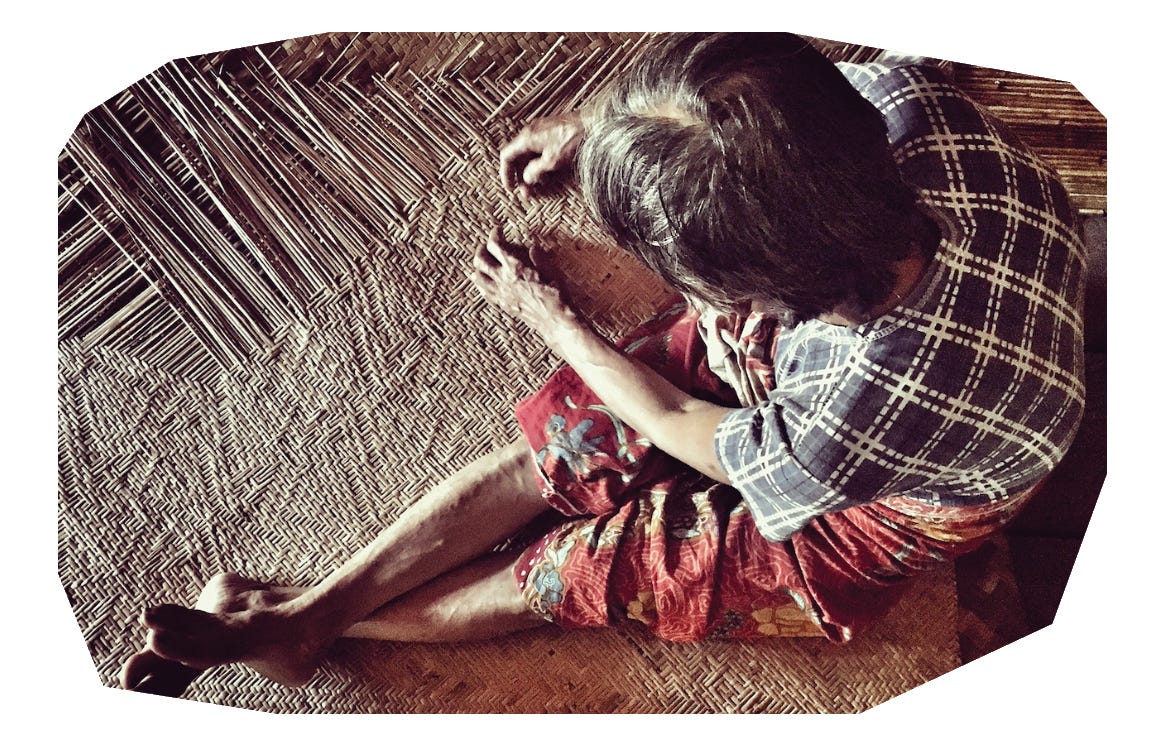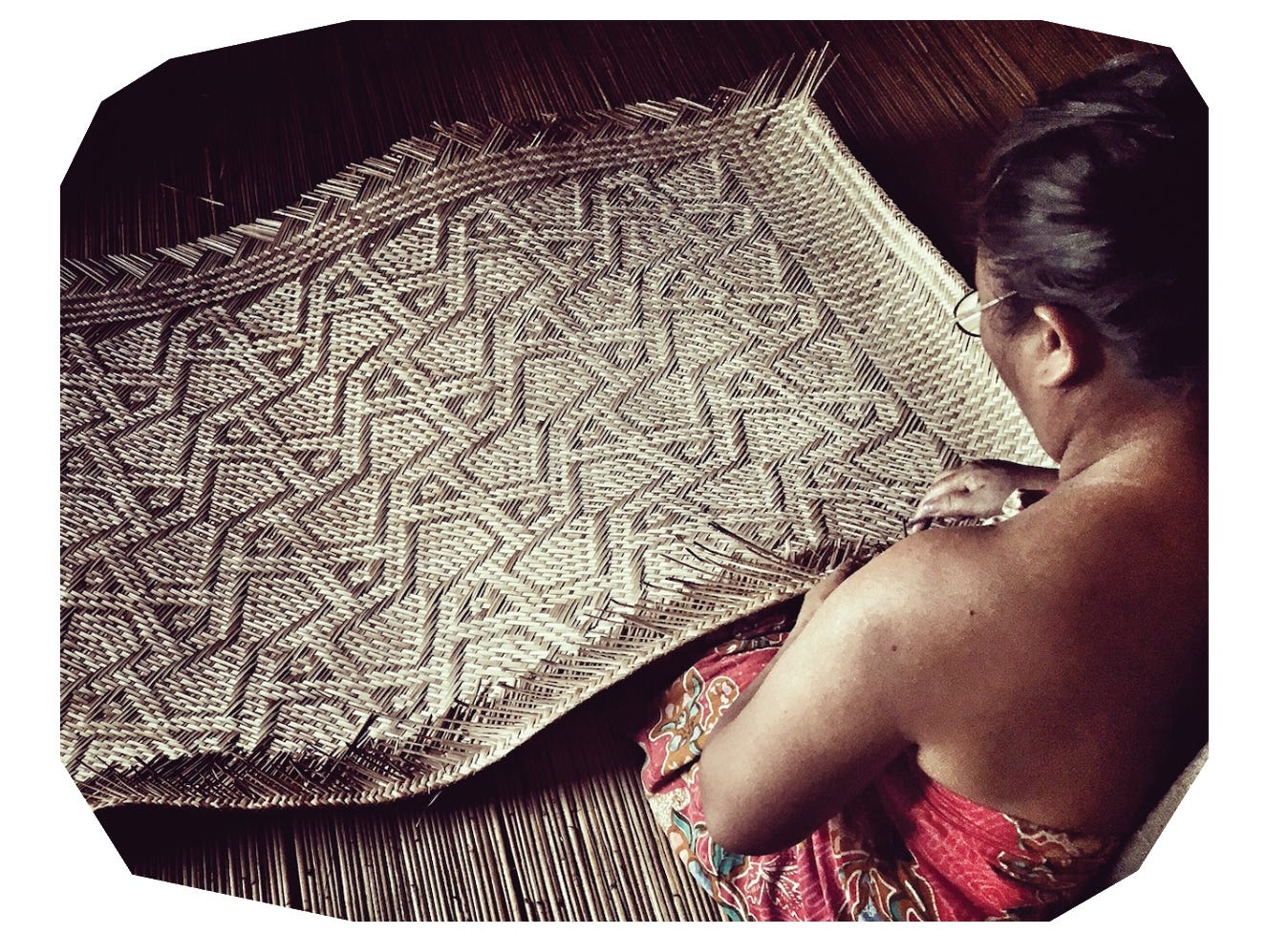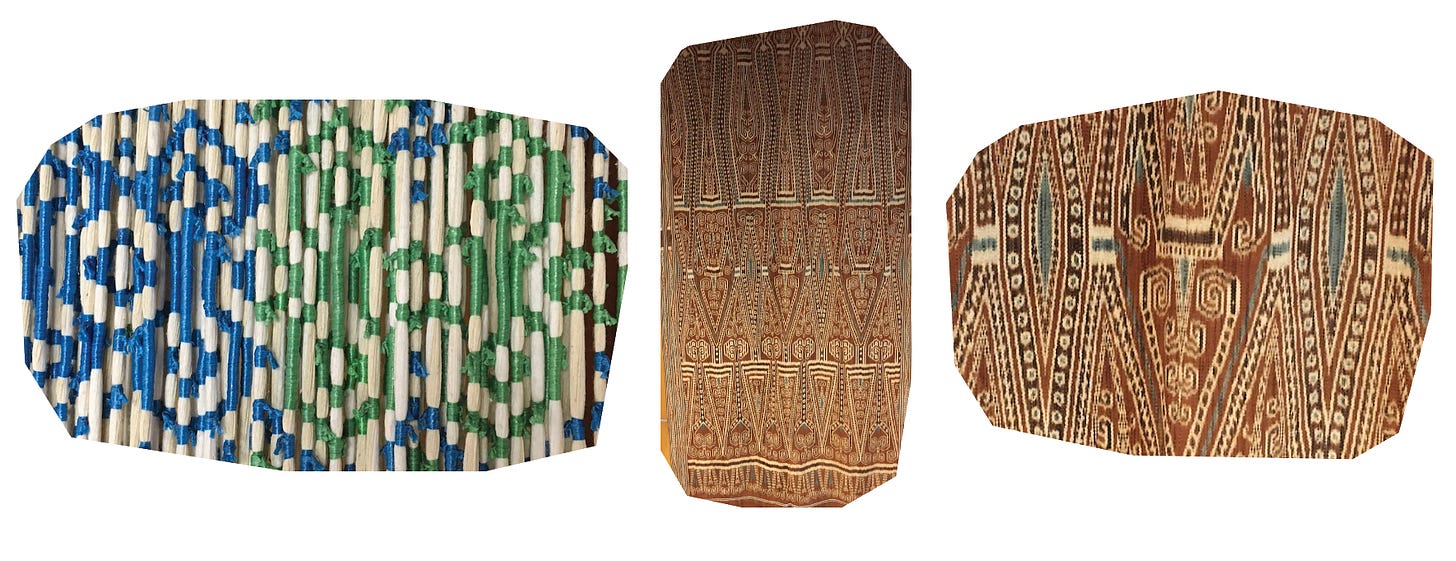Dear friends
Borneo has been on my mind a lot lately. It forms an intricate part of a big writing project I’m working on and, as I’ve been going through my notes and images from the times I’ve spent on that fascinating island, I thought I’d send you a “postcard”, the images above and below, which I shot while visiting a longhouse in Sarawak.
It was mid afternoon and the women of Ngemah Ulu longhouse were sitting in soft shafts of sunlight along the ruai, the “main street”, of their community. They sat with their legs outstretched and made the most of the afternoon light as they weaved the rattan mats that would be used for sleeping, or perhaps for drying corn. It was 2016, but it could very well have been 1962, or 1896; afternoons have passed like that for generations.
If it were 1896 however, some of these Iban women – all the descendants of head-hunters – would probably have been weaving not with rattan but with wild cotton, and on a back-strap loom. While their men garnered reputations through hunting, the women had a more gentle – but no less esteemed – route to social prominence: through tying, dying and weaving pua kumbu, the ceremonial cloth of the Iban tribe. Just as the most celebrated head-hunters would qualify to have the back of their hands tattooed, so too would the tribe’s most accomplished weavers.
These sacred textiles, which hold significant power to the Iban, were used to receive heads into the longhouses, and also formed part of the important ceremonies that marked life, death and agriculture.
The meticulous process of creating this sacred cloth is peppered with rituals and taboos. Knowledge is passed from the women of one generation to another, and a girl learning the art would initially copy the most simple designs of her ancestors. She would start with a small cloth and, as her skill and artistry (as well as her favour with the gods) increased, so would the size of her textile.
The design for the pua kumbu would begin in a dream. Once a woman has had the dream – considered a message from the gods – she must consult a shaman, who will determine whether she has the strength required to weave the images she dreamed because, the Iban believe, the motifs in pua kumbu have their own powers. “Safe” motifs are vines, creepers, bamboo or trees… but the more skilled the weaver, the more power her dreams would carry and the motifs in her design would depict demons, humans and animal totem figures like crocodiles and snakes.
LEFT: The design is tied in layers onto the threads before before they’re submerged in dye and then, through the dying process, the layers are removed.
Long before the pua kumbu begins to take shape, the threads are prepared in an extensive process that requires immense patience and skill. Traditionally made from wild cotton (these days silk is also used), the threads are “washed” in a mixture of plant extracts that strips the cotton of its natural oils and prepares the threads to take the vegetable dyes. It’s a process that is done outside and away from the longhouse, to prevent bad luck from falling on the community; during this time the women must keep their heads covered whenever they are outdoors, and as soon as their work is done they must bath in a river. The taboos abound.
Once the warp threads – the vertical ones – have been set up on the loom, the tying of the design begins. There are many taboos and rituals observed in this part of the process too, and weavers would place a piece of iron, often a nail, under the loom to give them strength and keep them safe from the powers of the motifs. As another form of protection, early on in the weaving process a solid band is introduced to the design, forming a symbolic barrier that protects the weaver from the motifs she creates afterwards.
The rules and regulations continue. There is a hierarchy in the order in which the designs are tied, and if the design includes animals then the needs of the most powerful ones must be taken care of first. A crocodile, for example, must have something to feed on before he is created, otherwise he could harm the weaver. And when the weaver ties the design of a crocodile, she must not leave her loom until the entire mouth has been tied.
These days Iban people are predominantly Christian, and the women who weave – not too many, as it’s a dying art (no pun intended) – tend to disregard the rituals and taboos that their ancestors once observed. At the Tun Jugah Foundation in Kucing looms have been set up and classes created in the hopes that the tradition will continue, and it was there that I met an Iban woman called Agnesia Belon, who weaves at the centre in her spare time. Do you dream your designs, I asked tentatively. “No,” she replied, “I just copy ones that I have seen in photos. They mean nothing to me, spiritually, but I like to weave because it’s a part of my heritage, and I want to keep my heritage alive.”
Just as I bent down to take a closer look at her work I noticed a piece of steel under an adjacent loom. Her eyes must have followed my gaze because she quickly shrugged and added, “some women do still put a nail underneath the loom. Just in case…”
It’s encounters like this that make my world go round.
With love,
Narina
PS If you know someone who might be interested in reading about this form of weaving, you’re welcome to share this page – just click on the button below







